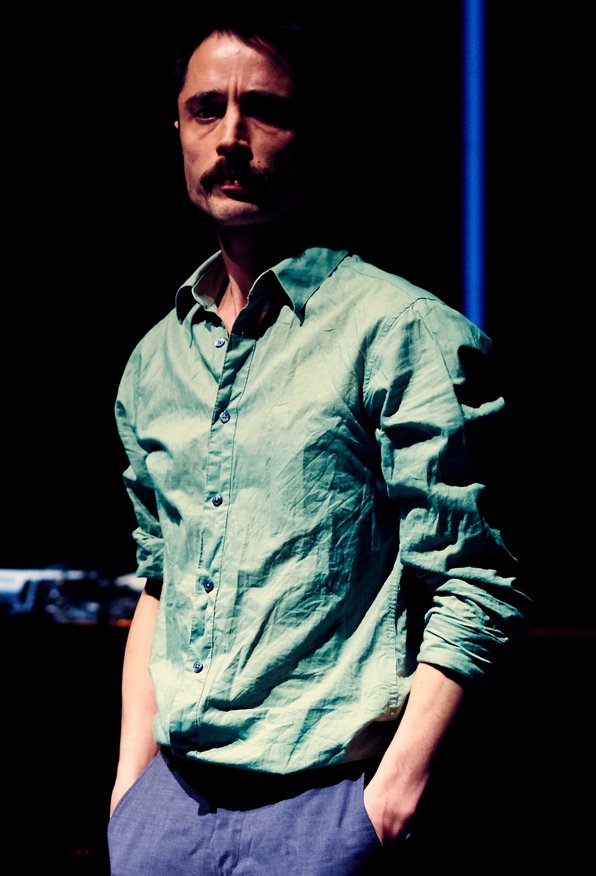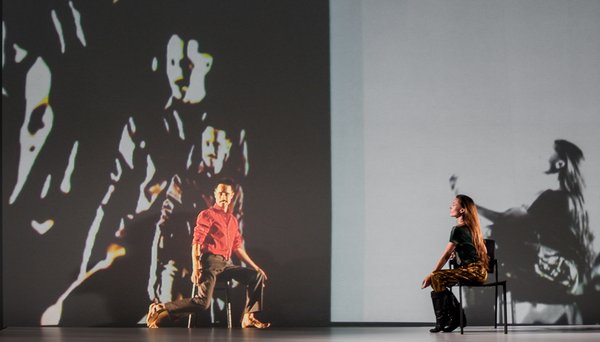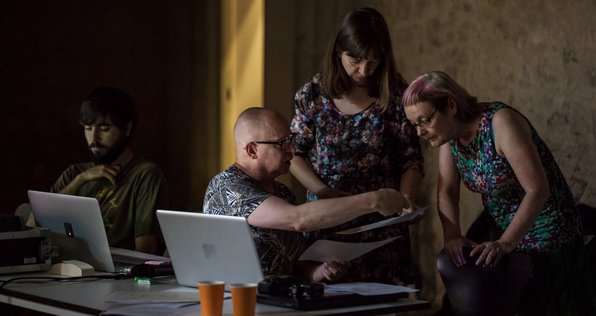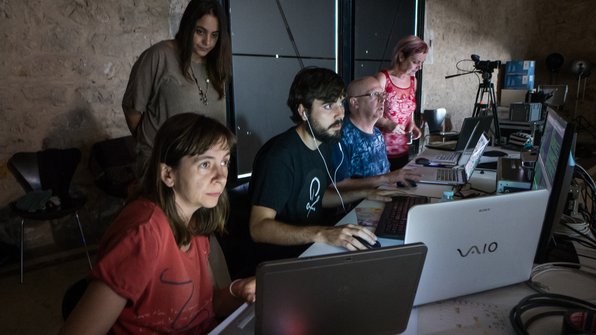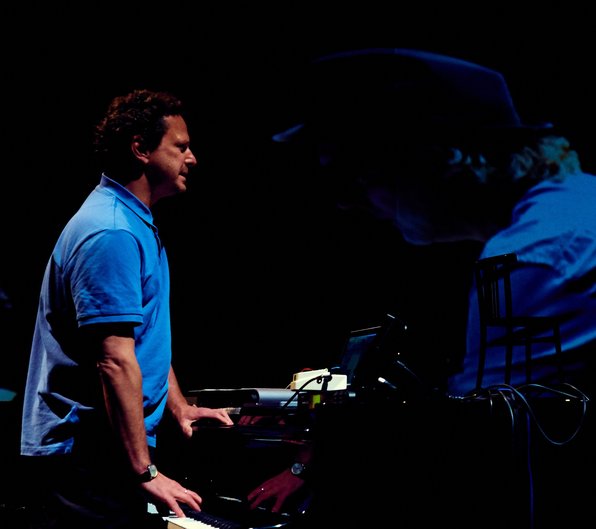References
There is nothing more valuable than a collaboration that inspires people - those who work on it and those who enjoy the results.
Remote Performances are always challenging. There are many elements and people that need to work smoothly without the audience noticing it: the audio-visual, network and artistic teams on all the participating sites must work close together, even when they are far away from each other and involve people in intermediate networks when necessary. This involves rehearsals and network tests for weeks before the event happens. Thus, good human communication, understanding and open minds are the key to success. That's exactly what I have found in our participations in the "near in the distance" productions. A dream team for network and performing arts: professional and friendly people, that have brought remote performances to the next level. Amazing experiences!
Maria Isabel Gandía Carriedo
Communications Manager | CSUC | Barcelona, Spain
Assuming a dance is made up of time, space and the body (or bodies relating to each other), one could think that taking away two of these parameters, namely space and the other body, this dance could not function. Oddly, even though the visceral elements of dancing with another person (touch, smell, sensing the other, ...) are not given, the fact that we could relate to each other in real-time made it possible to feel a connection to my partner. Whether it is the dancers' codes that transmit I cannot say, but seeing the other person and their real-time reactions, made it possible to improvise together and to establish a connection that is familiar from "real" dance encounters.
Dominik Grünbühel
Dancer, Choreographer, Musician | Vienna, Austria
The quality of your productions continues to amaze us! These are really beautiful and compelling videos. Congratulations on a wonderful and engaging performance that actually makes the networked component an added aesthetic vs. an exercise in technology. [...] it is one of the best examples of this work in practice I have ever seen. Bravo!
Justin Trieger
Director of New Media and Distance Education | New World Symphony, America’s Orchestral Academy | Miami/FL, USA
Our work in Kònic focusses since the early nineties towards the symbiosis between the performing arts and new media. The relationship between performing arts and diverse technologies has been a motivation for us to explore new possibilities for the stage, and create pieces that relate to our technologically oriented society. Collaborating with researchers and technologists is a unique way to understand and develop specific tools that will then find their way in our performances and artistic work.
We are very grateful to have had the opportunity to participate in the project "near in the distance", and to be able to work with a great team of experts in the field of high-speed network communication as well as dancers and musicians from across different countries involved in the project. "near in the distance" has been an ideal environment for us to try out artistic ideas directly related with the title and concept of the piece, that holds the essence of Networked Performances: how can we simulate presence, how can we create a sense of shared space between perfomers and audience at a distance, how can we create live performances relying greatly on digital images and sounds from live performers who are not "live".
The huge amount of work of a team of very skilled professionals from many different fields with great mutual respect for the work of the other and a good balance between technical and artistic skills make this project possible and we think is a reference for future works in this field.
Rosa Sánchez and Alain Baumann
Artistic and Technological Director | Kònic Thtr/Lab | Barcelona, Spain
Technology gives an opportunity to make musical and sonic "visions" possible: Since I was 12 years old, I have been interested in and making electronic music. As a teenager I studied piano, composition, and guitar and soon got my first synthesizer.
At the age of 19, I was walking back home one night from a long rehearsal, carrying my heavy dx7II keyboard. I was making a short cut through a park between two museums in the center of Vienna, the night was very quiet. Suddenly I heard frogs, soft waves of water, a little wind and later some birds - but why and from where? There was no lake, river or water of any sorts in this small park. I was stunned and speechless. The following day, I found out it was a live transmission from the Danube river, transmitting the signals of about 50 microphones to the park in the city, where it was displayed by over 100 hidden loudspeakers. The piece was called "landscape soundings" by Bill Fontana and it changed my view on music and technology, showing me that my hidden thoughts and wishes could be put into real sonic experience with the help from intelligent use of sophisticated audio technology.
Inspired, I started to create a system of composition, that allowed me to deal with spaces, uncertainties and polyphonic time structures. I called it "dimensional music" and it helped me to create online and telematic music concerts, music installations in space and multiple dimensional compositions through the last 30 years.
When I was asked to write and perform for the "near in the distance" project, I was thrilled about the sound quality, the stability and even the visual quality of transmission. The technical setup kept its promise: two times already, we were able to play a dedicated composition, a concert for up to 8 musicians in different cities.
As the technology was stable and reliable, I could incorporate - among other parameters - relativity in timing, using the very low latency as a part of rhythmical patterns. After my eye-opening experience in the park, this was the second time technology surprised me with the high standard of live transmission and made it possible to create music that was unhearable - and unthinkable - before.
On the other hand, the way this technology is used most of the time is a little disappointment: it seems to be used mainly for transmitting opera, or classical music from one place to another. That is all fine and good, but to use such a powerful and stable technology in the same way as an old radio: from point A to point B, one input, one output, is a rather boring and simple way of use. 5 different locations and musicians/orchestras playing together, every place being as well input and output, this is the dream that already has been realized, that is the way to go on! Who knows what Beethoven would do with this tool! He would have probably stretched the possibilities to the max, writing a piece for 100 choires in 100 different cities! I encourage everyone to think out of the box, and to be inspired by the possibilities of the dialogue between artistic visions and technology.
Rupert Huber
Musician, Composer | Vienna, Austria

